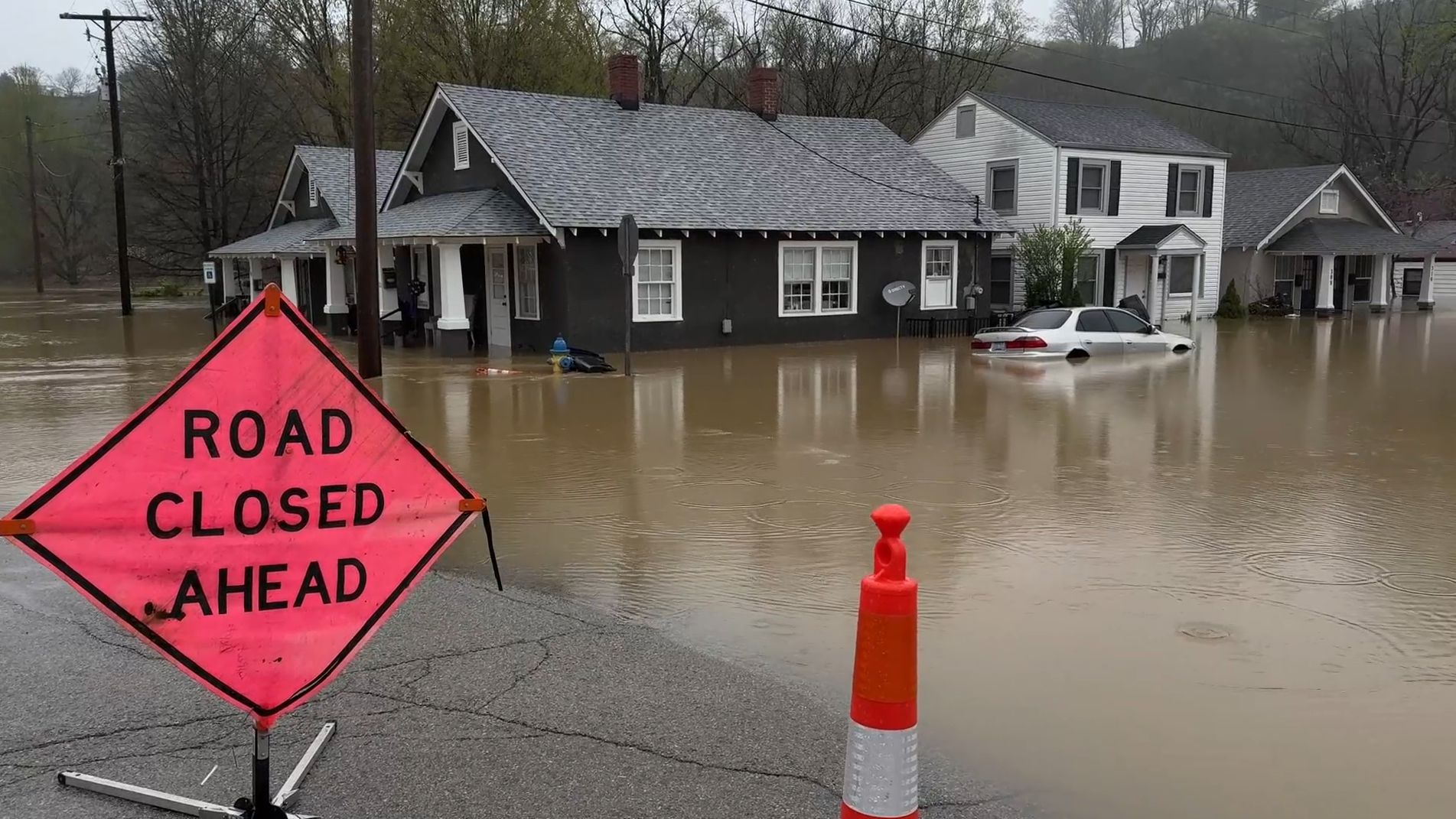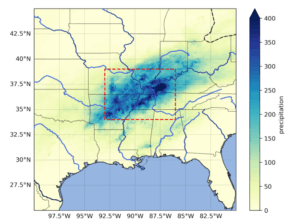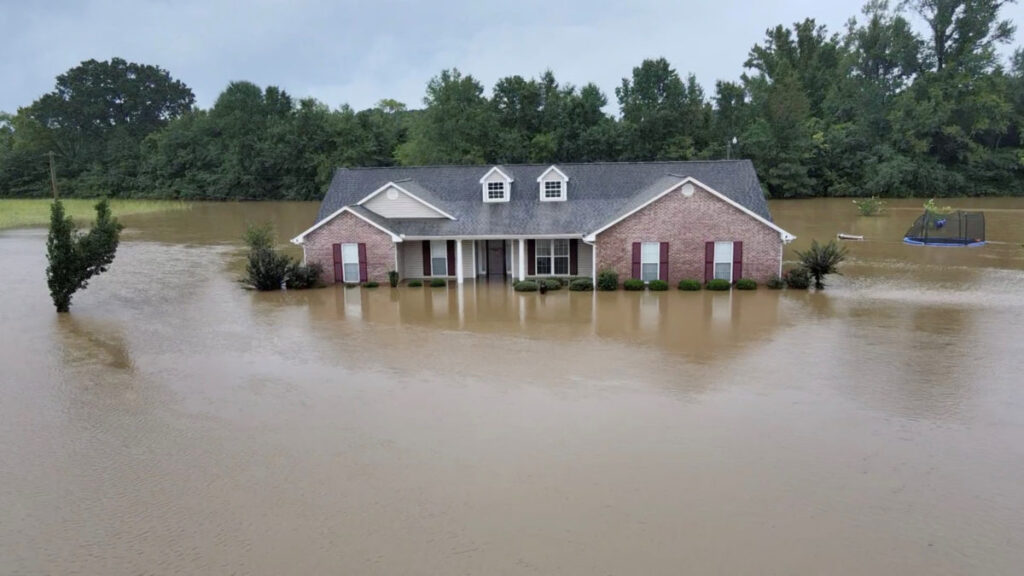Skip to main content

In early April, the central region of the Mississippi River basin in the United States experienced a series of severe weather events, characterized by intense rainfall and multiple tornado warnings. This period marked a significant meteorological anomaly, with widespread impacts across several states.
Between April 2nd and 6th, the region faced unprecedented flooding, with some locations recording over 400 mm (16 inches) of rainfall-an all-time high for this area. The resulting floods have been described by the US National Climate Service as “potentially historic,” causing extensive damage across Mississippi, Arkansas, Missouri, Illinois, Indiana, Kentucky, Tennessee, and Alabama (The Guardian, 2025).
The storm system resulted in at least 24 fatalities, with flooding directly responsible for approximately 15 deaths. Tennessee bore the brunt, with no fewer than 10 lives lost. In response, emergency declarations were issued in Tennessee, Kentucky, and Arkansas (FEMA, 2025). Economic damages are estimated to range between $80 billion and $90 billion, with power outages affecting over 100,000 residents in Arkansas and thousands more in Tennessee (NYT, 2025).
To understand whether human-induced climate change influenced the likelihood and severity of this extreme rainfall, a team of international scientists from the US, Netherlands, Denmark, France, and the UK conducted a comprehensive attribution study. This research focused on the rainfall over the four days from April 3 to 6, particularly examining the region most affected by the intense precipitation, as illustrated in Figure 1.

Figure 1: Four-day accumulated rainfall in the Central Mississippi River basin from April 3-6, 2025. Major rivers are highlighted in blue, and the rainfall study zone is outlined with a purple dashed line. Data sourced from MSWEP.
Key Insights from the Study
- Impact on Agriculture: The floods inundated extensive rural and farming regions, notably in Arkansas, causing an estimated $78 million in crop losses, primarily affecting already planted fields. Fortunately, the timing of the floods spared crops like peanuts and cotton, which had not yet been sown, allowing farmers to replant crops such as corn and soybeans in the aftermath.
- Rarity of the Event: Based on high-resolution climate data, such intense rainfall over this region is exceedingly rare, occurring roughly once every 90 to 240 years under current climate conditions. However, with a global temperature increase of approximately 1.3°C, the probability of such events could rise significantly-by a factor of 2 to 5-making similar rainfall events 13-26% more intense on average.
- Human Influence on Climate Extremes: Analyzing historical climate model data suggests that human activities have increased the likelihood of such heavy rainfall by about 40%, with a roughly 9% increase in the event’s severity. These estimates, however, vary across models, with some indicating even greater or lesser impacts, reflecting inherent uncertainties in climate projections.
- Future Projections: Climate models consistently project that extreme precipitation events like the April 2025 floods will become more frequent and intense as global temperatures continue to rise. Under current policies aiming for a 2.6°C warming by 2100, the likelihood of such events could nearly double, with their intensity increasing by approximately 7%.
- Role of Ocean Temperatures: The study also examined sea surface temperatures, particularly in the Gulf of Mexico, which contributed moisture to the storm system. Human-induced warming has elevated these waters by about 1.2°C (2.2°F), making such warm ocean conditions roughly 14 times more probable than in pre-industrial times. This increased ocean heat enhances evaporation, fueling heavier rainfall.
- Global Context of Climate Extremes: Similar patterns of increased precipitation extremes have been observed in other regions worldwide, with the IPCC Sixth Assessment Report attributing many such events to human-induced climate change, underscoring a global trend toward more intense weather extremes.
- Concluding Remarks: Combining observational data, climate models, and IPCC assessments, researchers conclude that human influence has significantly amplified the likelihood and severity of the April 2025 floods. The estimated 40% increase in event probability and 9% rise in intensity are likely conservative, and ongoing warming is expected to further intensify such extreme rainfall events.
- Effectiveness of Early Warning Systems: Despite the complexity of the storm-featuring tornadoes, flash floods, riverine flooding, and landslides-the US National Weather Service successfully issued early warnings up to a week in advance of river cresting. These alerts enabled authorities to prepare, inform the public, and evacuate vulnerable populations, demonstrating the value of decades of investment in forecasting and emergency response systems.
- Challenges Facing Forecasting Agencies: Currently, nearly half of the National Weather Service offices are experiencing staffing shortages of 20% or more, double the levels from ten years ago. Experts warn that further reductions could impair the ability to predict and respond to future extreme weather events, potentially putting lives at greater risk.

